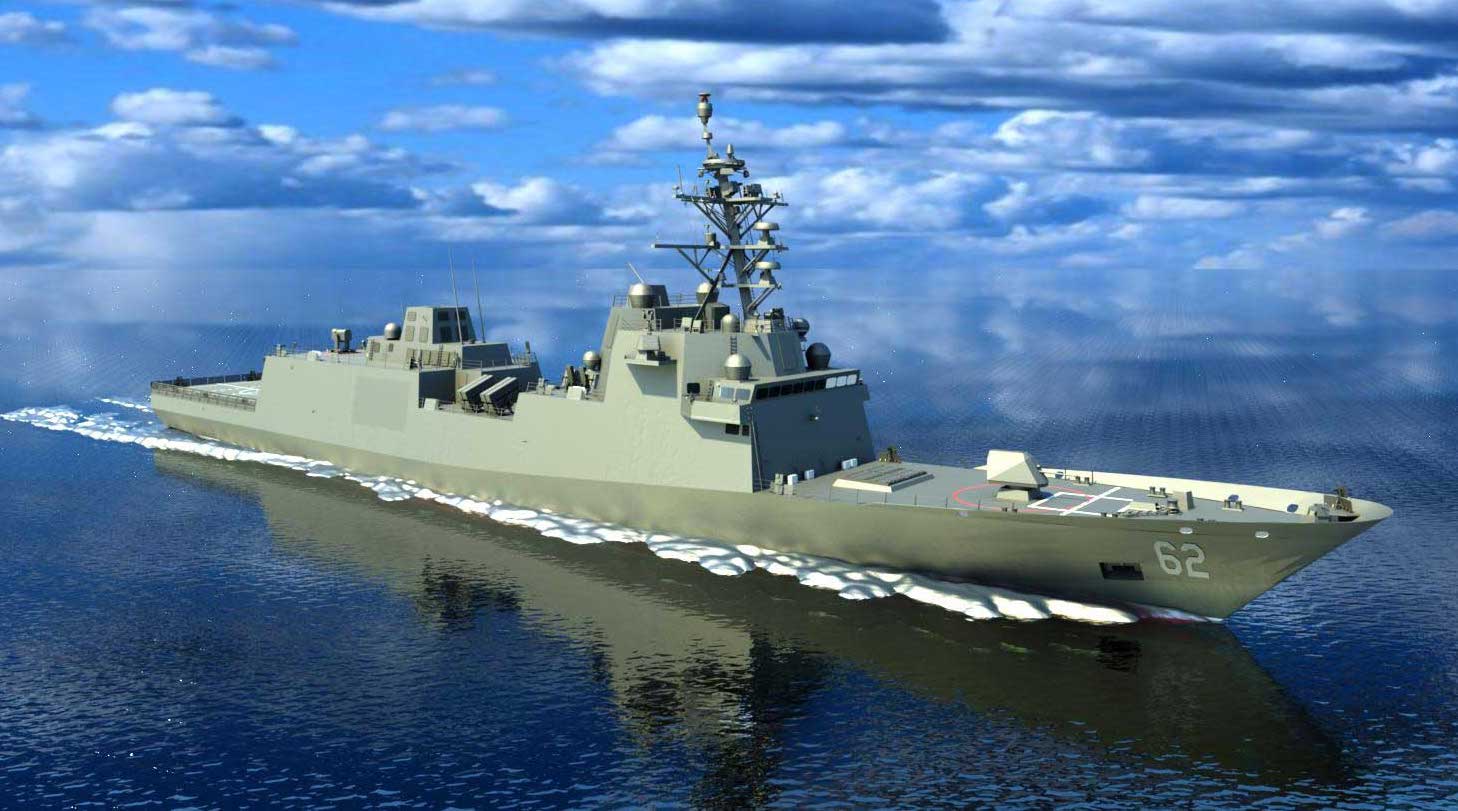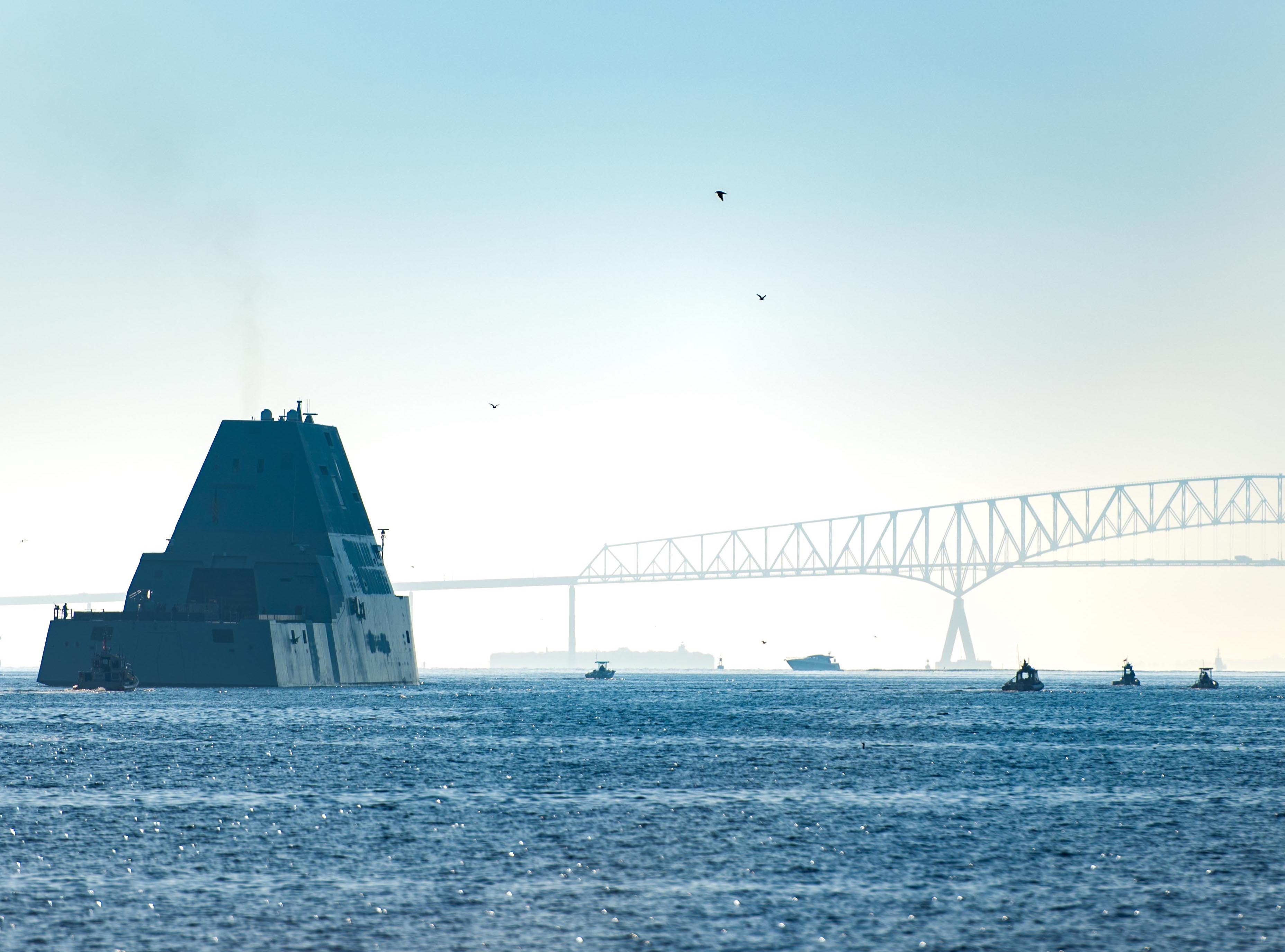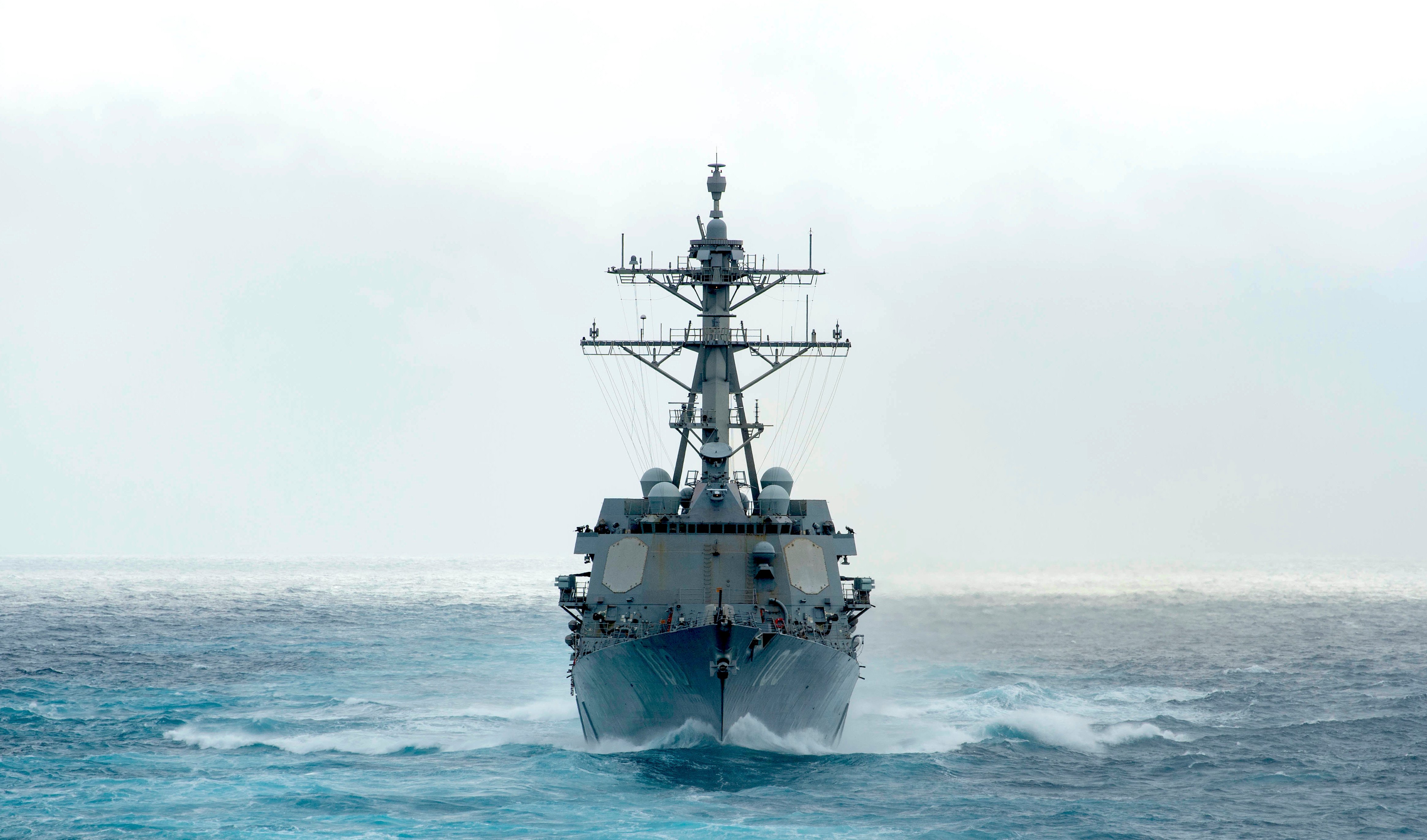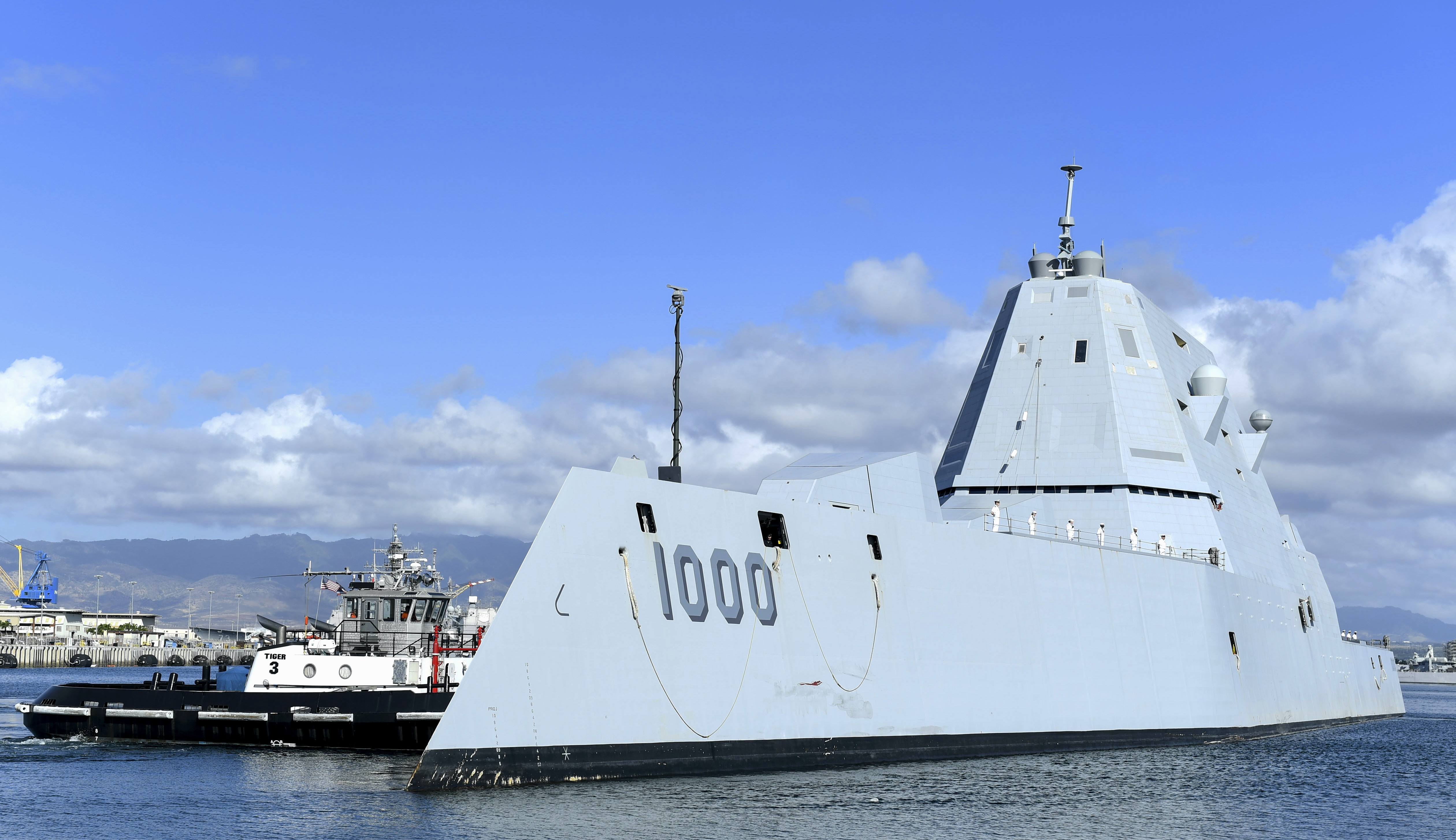
The Navy already has models of the Constellation-class frigate and the upcoming DDG(X) destroyer in the water at Naval Surface Warfare Center Carderock in Maryland and is using a new set of engineering best practices to guide the development of both programs, several Navy officials explained last week.
The Fiscal Year 2020 defense bill ordered the Navy to create a senior technical authority for every ship class, who would be responsible for overseeing a ship design process that would better understand critical systems early in the new ship’s development and create a plan to reduce risk through significant testing and modeling work, Carey Filling, the director of the Surface Ship Design and Systems Engineering directorate at Naval Sea Systems Command, and the senior tech authority for DDG(X) and the frigate, said last week.
Filling, speaking at a virtual event hosted by the American Society of Naval Engineers, said there’s a “surface ship renaissance” happening and he’s excited about the new development path the Navy is using for these two programs that will play such important roles in the future fleet – including a more aggressive requirements development and management process, early and frequent design reviews of individual components and a mandate to conduct land-based testing.
The DDG(X) program, formerly called Large Surface Combatant or DDG Next, is among the first major programs that will go through this new process under a senior tech authority. Its topline requirements were just approved by Chief of Naval Operations Adm. Mike Gilday at the end of 2020, NAVSEA Commander Vice Adm. Bill Galinis said during a separate panel at the ASNE event. Filling said the Navy is already trying to minimize risk on the program, even ahead of bringing in industry and starting a competition.
The service has an evolved design based on both the Arleigh Burke-class and Zumwalt-class destroyers, and “that model and the frigate are trading time in the tank off and on, so the Carderock team is working on many ships to keep up with our requests,” Filling said.
Filling added that his team also has an evolved design of an integrated power system that takes lessons from the Zumwalt destroyer, the Ford-class aircraft carrier and the Columbia-class submarine. DDG(X) will ultimately have a next-generation IPS – informed by these three current programs but not a duplicate of any single one – to meet the Navy’s vision for how DDG(X) should operate.
“We definitely feel it’s going to be an IPS, we’ve decided on that. We have not decided on the particular plant, we’re still exploring options. So we’re open to new ideas,” Filling said.

The ship will have “range and miserly fuel consumption, so we are looking at various plants that optimize that because what we’re trying to optimize is time on station. We want that ship to be able to stay forward, stay on station and be able to deliver ordnance on target. That’s one of the things right now that limits us on DDGs, they don’t have the legs of the previous cruisers. So we’re heavily focused on that, and making sure that that ship has the ability to stay on station,” he added.
Even in this early stage of development, under the new STA processes, review boards with representation from the NAVSEA engineering directorate, the resource sponsor at the surface warfare directorate (OPNAV N96) and the Program Executive Office for Ships are already convening to look at early ideas for critical systems the DDG(X) will use and seek ways to reduce risk, with a particular focus on the hull form and the propulsion system.
“The team is working hard to drive that design forward and take us to the next level. We’re looking forward this year to have industry, particularly the shipyards and our [original equipment manufacturers], engaged to a greater extent,” Filling said.
On frigate, Filling said the program formally kicked off before Congress passed the FY 2020 defense bill, so it wasn’t bound by the new requirements. Still, he said, the Navy had already been moving in a similar direction, and so the frigate development plan gives a glimpse of what’s to come for DDG(X).
One of the most important things the frigate program did was craft the capability development document at the Navy level instead of with the Joint Staff. This allowed the Navy to share detailed specifications with potential shipbuilders from the start, and as shipbuilders proposed ideas that could drive down cost or boost performance, the Navy on its own could update requirements in both the CDD and the specifications. Filling said the end result was a design that is affordable, producible and ensured the shipbuilder’s voice was captured in the process.
“Right now at the maneuvering and seakeeping basin out at Carderock there is a segmented frigate model running in the basin right now, running alongside several other surface ships, so it’s good to see a surface ship renaissance out there at Carderock,” he said.
Even though the Constellation-class (FFG-62) design is based off the FREMM multi-mission frigate operated by the French and Italian navies, the length and beam were increased to meet Navy specifications, so the altered hull will need to go through testing to ensure the new dimensions are effective on the high seas, Filling said.

Filling also said he and his counterparts at NAVSEA’s engineering directorate (SEA 05) were conducting formal Systems Engineering Technical Reviews (SETRs) on frigate components. Frigate contractor Fincantieri brought with it many of its original equipment manufacturers, but the Navy is still conducting a full detail design process to ensure that, as some components are moved to U.S.-based manufacturing plants or swapped for new American components, the systems still work well together in the final frigate design.
Because the frigate program started before the FY 2020 defense bill passed, it is not technically required to create a land-based engineering site – but Filling said the Navy is making plans right now to set one up at Naval Surface Warfare Center Philadelphia, where most of the other LBESs will be located.
“Maybe [we’re] a little bit behind where we’d like to be in the newly envisioned STA process, but we’re working fast to get that done,” he said of building an LBES to support the frigate program.
With so many new ship programs coming up in the next few years and the requirement for all of them to have land-based test sites for critical components, Filling said there’s a “full-court press” with the program executive offices, the NAVSEA engineering team and the NSWC Philly team to get multiple test facilities opened and to coordinate all the military construction work that goes along with that.
In his presentation at ASNE, Galinis talked about the importance of land-based testing, saying the work makes a “tremendous difference” and is “mitigating a lot of risk” in the programs.
He also talked about the challenge of designing DDG(X) compared to the frigate: when the Navy kicked off its FFG(X) competition, it required that shipbuilders base their proposals on a mature ship design already in use somewhere else in the world. The Navy has concluded there are no sufficient parent designs for the DDG(X) competition, but Galinis said there are still a lot of lessons learned from past work that can apply.

“You can’t evolve a current design if you don’t have a parent design you can leverage,” he said.
“You’re kind of starting from scratch, right, from a whiteboard. And so this is kind of where we are with the DDG(X) program, that we’re getting ready – we’ve got the top-level requirements, we’ve done some very early concept design work on that (with) the warfare center at Carderock, with SEA 05 and other organizations kind of leading that. And what they’ve taken on on that effort there is really kind of using set-based design versus maybe the more traditional point-based design that many of us are familiar with.”
In a point-based design, he explained, the Navy would have a single design in mind and iterate as it learns more, slowly evolving that one design until it’s finessed enough to meet all the requirements.
Since there’s no good starting point for DDG(X), the Navy is using a “set-based design, where you start looking at a large number of designs. Maybe your requirements aren’t fully defined yet. You’re looking at different new technologies and everything like that. But it really kind of gives you an opportunity to look really across a broader spectrum, if you will, at different designs that are out there and then modulate on those to kind of learn about the different design attributes and neck down to kind of a single design,” he added.
Galinis said this approach allows the Navy to look not just at other destroyer designs but more broadly at “foundational design attributes that really led to successful designs that we’ve been able to continue to evolve and to upgrade over time,” including the Nimitz-class aircraft carrier, the Los Angeles-class submarine, the Arleigh Burke destroyer, and the San Antonio-class amphibious transport dock.
Filling said the team has learned several things already from these other ship classes, including the interplay between hull size and an IPS system, and how to buy sufficient data rights for the ship upfront.
On the IPS, Filling was asked during a question-and-answer session about IPS’s size and whether it would force the Navy to look at a larger hull size for DDG(X).

He said the “design is still in progress, so I can’t tell you a lot, but certainly the team has looked at ships as small in displacement as DDG-51, ships that have been larger than Zumwalt. Certainly because of our desire for affordability and getting this both quality and quantity, the design space has been driven kind of smaller, and the team definitely thinks we can get IPS in the hull.”
He said the Navy was committed to using an integrated power system because the ship has to generate fewer kilowatts overall when power is shared across hotel services, combat systems and propulsion. IPS is the only way to enable future radars, electronic attack systems, lasers and other directed energy weapons, he said, and it’s the best way to generate the fuel efficiency and range the Navy requires from DDG(X).
He said the engineering team is looking into energy storage options now, which “can also help drive the IPS plant smaller.”
Rear Adm. Jason Lloyd, the deputy commander for ship design, integration and engineering (SEA 05), said during the presentation with Filling that the IPS design also allows for more flexibility to share power between combat and propulsion systems.
“You can get a significant amount of electrical power by slowing down a ship a knot. And so there’s a very, very good tradeoff there: hey, we can slow down a few knots and get the full combat systems power, or if you go full speed on the ship and get partial combat systems power,” Lloyd said.
“So there’s a real good tradeoff there that allows the IPS system to really deal with … ensuring that we have power for future weapons capabilities as well as current ones.”

Filling also addressed data rights, saying the Navy had learned a lot with the Zumwalt program on what the shipbuilder needed for efficient digital ship design versus what the Navy needs to buy access to so it can maintain the ships later on.
“We need very robust models of how to build ships and how to build combat systems; those don’t translate well for the later fleet operation of ship and maintenance of a ship. So for DDG(X), the intent is obviously let the shipbuilders have their model for production, but we keep a much lighter model for the future maintenance and operation of the ship,” Filling said.
“And I think something that worked well on Zumwalt was we were able to take that model and … the ship actually has tablets that do the maintenance onboard, which is something I don’t think any other ship in the fleet has. So they can walk around and have a lighter version of the ship model, system models, the diagrams, right on their hip on a robust ruggedized tablet. And our [Regional Maintenance Centers] engineers use the same tablets when they go aboard Zumwalt (DDG-1000) and Michael Monsoor (DDG-1001). So I think we’re taking a similar strategy for DDG(X).”





